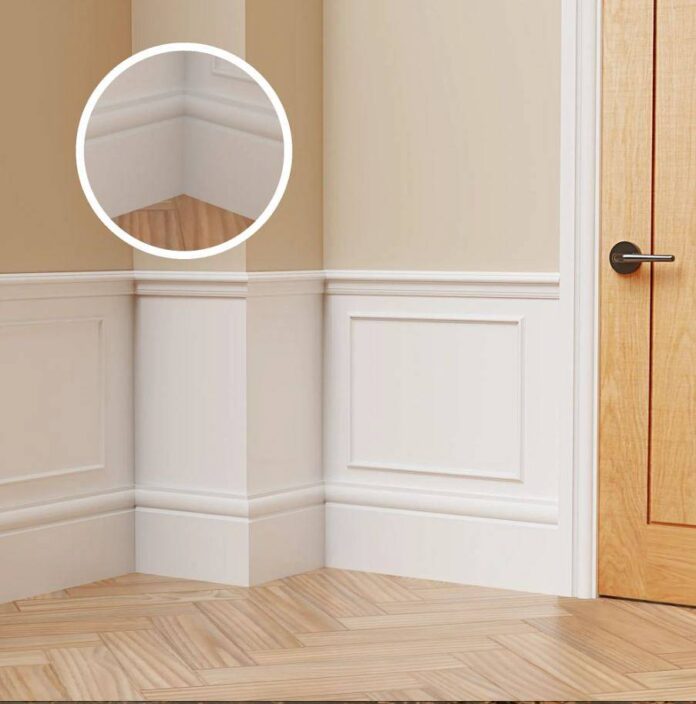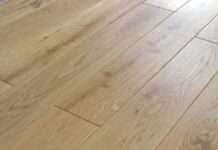When it comes to interior design, the devil is often in the details. One such detail that can make a significant impact on your home’s overall aesthetic is the humble skirting board. Among the various styles available, torus skirting boards have gained popularity for their classic yet versatile profile. But are they the right choice for your home? Let’s delve into the world of torus skirting boards and explore their potential to enhance your interior style.
What Are Torus Skirting Boards?
Torus skirting boards are characterised by their distinctive profile, which features a prominent, rounded convex curve at the top, followed by a flat section below. This design creates a bold, eye-catching look that can add depth and interest to any room. The name “torus” comes from the Latin word for a large, rounded moulding, which aptly describes the defining feature of this skirting board style.
The Historical Context
Torus mouldings have a rich history in architecture, dating back to classical Greek and Roman designs. In British homes, they gained particular prominence during the Georgian and Victorian eras, where they were often used in conjunction with other decorative elements to create ornate interiors. Today, torus skirting boards continue to be a popular choice for both period properties and modern homes seeking a touch of traditional elegance.
Advantages of Torus Skirting Boards
Visual Impact: The bold curve of torus skirting boards creates a strong visual statement, drawing the eye and adding architectural interest to a room. This can be particularly effective in spaces with high ceilings or large wall expanses.
Versatility: Despite their traditional roots, torus skirting boards can complement a wide range of interior styles. They can add a classic touch to contemporary spaces or enhance the period feel of more traditional interiors.
Practicality: The rounded profile of torus skirting boards is not just aesthetically pleasing; it’s also practical. The curved top is less likely to collect dust compared to flat-topped designs, making cleaning and maintenance easier.
Durability: Many torus skirting boards are made from MDF (Medium Density Fibreboard), which offers excellent durability and resistance to warping or cracking. This makes them a long-lasting choice for busy households.
Considerations for Different Interior Styles
Traditional and Period Homes: Torus skirting boards are a natural fit for traditional interiors. In Georgian or Victorian-style homes, they can be paired with other period-appropriate mouldings and architectural details to create an authentic look. Consider using taller profiles (around 150mm or more) for a grand, stately appearance.
Contemporary Spaces: While torus skirting boards have historical roots, they can work surprisingly well in modern interiors. Opt for a slimmer profile (perhaps 95mm or 120mm) and paint them to match your walls for a subtle, streamlined look that adds texture without overwhelming the space.
Minimalist Designs: For minimalist interiors, torus skirting boards might seem too ornate at first glance. However, by choosing a very slim profile and painting it to blend with the walls, you can add a hint of traditional detail without compromising the clean, uncluttered aesthetic.
Eclectic Interiors: In eclectic or fusion-style homes, torus skirting boards can serve as a unifying element, tying together diverse design elements. Their classic profile can provide a grounding presence amidst more eclectic furnishings and decor.
Rustic or Country Styles: Torus skirting boards can complement rustic interiors when finished in natural wood tones or painted in soft, muted colours. Their rounded profile echoes the organic forms often found in country-style decor.
Choosing the Right Torus Skirting Board
When selecting torus skirting boards for your home, consider the following factors:
Height: The height of your skirting board should be proportional to your room’s dimensions and ceiling height. As a general rule, taller ceilings can accommodate taller skirting boards. Common heights range from 95mm to 220mm, with 120mm and 150mm being popular choices for many homes.
Material: MDF is a popular choice for torus skirting boards due to its affordability, durability, and smooth finish. However, solid wood options are available for those seeking a more traditional or high-end look.
Finish: Consider whether you want to paint your skirting boards or prefer a natural wood look. If painting, choose a hard-wearing, washable paint to ensure longevity, especially in high-traffic areas.
Consistency: For a cohesive look, try to match your torus skirting boards with other mouldings in the room, such as architraves and cornices. Many suppliers offer matching sets to ensure a harmonious design.
Installation and Maintenance
While professional installation is often recommended, particularly for complex room layouts, DIY enthusiasts can install torus skirting boards with careful planning and the right tools. Here are some tips:
- Measure carefully, allowing for corners and any obstacles.
- Use a mitre saw for precise angle cuts at corners.
- Apply adhesive to the back of the skirting board and use panel pins to secure it.
- Fill any gaps or nail holes with wood filler and sand smooth before painting or finishing.
Maintenance of torus skirting boards is relatively straightforward. Regular dusting and occasional cleaning with a damp cloth are usually sufficient. The rounded profile helps prevent dust accumulation, making them easier to keep clean compared to some other styles.
Torus Skirting Boards in Different Room Types
Living Rooms: In living areas, torus skirting boards can add a touch of elegance and formality. They work particularly well in rooms with traditional fireplaces or period features.
Bedrooms: For bedrooms, consider a medium-height torus profile to create a cosy, enveloping feel without overwhelming the space.
Kitchens and Bathrooms: In these moisture-prone areas, ensure your torus skirting boards are properly sealed and painted with moisture-resistant paint. The rounded profile can be beneficial in these spaces as it’s easier to wipe clean.
Hallways: Torus skirting boards can make a strong first impression in entrance halls and corridors. They can help to visually widen narrow spaces and provide a durable barrier against scuffs and knocks.
Combining Torus Skirting Boards with Other Design Elements
To make the most of your torus skirting boards, consider how they interact with other design elements in your home:
Flooring: Torus skirting boards can create a beautiful transition between walls and various flooring types. They work particularly well with hardwood floors, adding a refined border that complements the natural wood grain.
Wall Treatments: Consider how your skirting boards will interact with different wall treatments. They can provide a striking contrast against bold wallpapers or act as a subtle frame for painted walls.
Doors and Windows: For a cohesive look, match your torus skirting boards with similarly profiled architraves around doors and windows. This creates a harmonious flow throughout the space.
Furniture Placement: The bold profile of torus skirting boards can influence furniture placement. They can provide a natural stopping point for larger pieces of furniture, helping to create a balanced room layout.
The Environmental Consideration
For the environmentally conscious homeowner, it’s worth noting that MDF torus skirting boards can be a sustainable choice. Many manufacturers use wood from responsibly managed forests, and the durability of MDF means less frequent replacement, reducing overall resource consumption.
Conclusion: Are Torus Skirting Boards Right for Your Home?
Torus skirting boards offer a blend of classic elegance and versatile design that can enhance a wide range of interior styles. Their bold profile adds architectural interest and depth to rooms, while their practical benefits make them a functional choice for modern living.
For homes with traditional or period-inspired interiors, torus skirting boards are an excellent choice, providing authentic detail and historical accuracy. In more contemporary settings, they can add a subtle touch of classical influence, creating an interesting juxtaposition of old and new.
Ultimately, the decision to use torus skirting boards in your home should be based on your personal style preferences, the architectural characteristics of your space, and the overall aesthetic you wish to achieve. Their timeless appeal and adaptability make them a safe bet for those looking to invest in quality interior detailing that will stand the test of time.
Whether you’re renovating a Victorian terrace, updating a modern apartment, or building a new home from scratch, torus skirting boards offer a way to add sophistication and character to your interiors. By carefully considering your choices in terms of height, finish, and installation, you can use these classic architectural elements to create a polished, cohesive look that elevates your entire home design.
In the world of interior design, it’s often the smallest details that make the biggest impact. Torus skirting boards, with their perfect balance of form and function, prove that sometimes, the most impactful design elements are those that quietly frame our living spaces, adding depth, interest, and a touch of timeless elegance to our homes.
Help keep news FREE for our readers
Supporting your local community newspaper/online news outlet is crucial now more than ever. If you believe in independent journalism, then consider making a valuable contribution by making a one-time or monthly donation. We operate in rural areas where providing unbiased news can be challenging. Read More About Supporting The West Wales Chronicle
























